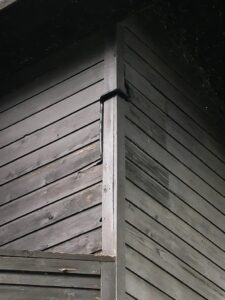Woodpeckers are the root of both costly damage to houses and noisy disruptions for residents. Homeowners should look for chipped paint, dents, and holes along siding, trim, chimneys, and near fences. Hearing repeated pecking is also a clear indicator of woodpecker infestations.
Why is a woodpecker pecking at my house?
Woodpeckers drill holes with their beaks in wooden structures for several reasons. If the woodpeckers are drilling many small holes, the siding is probably infested with insects that appeal to woodpecker appetites. Woodpeckers also drill large holes in siding for nests. Sometimes just peck on wood or metal in a woodpecker ritual called drumming. Drumming usually occurs only in spring and at dawn.
What problems will woodpeckers cause?
Property Damage
Woodpeckers drum on surfaces, including siding, trim, and wooden structures. This persistent drumming can cause damage to the wood, creating holes, and weakening the structural integrity of the affected areas.
Noise Disturbance
The constant drumming and tapping sounds made by woodpeckers can be loud and disruptive, especially if they peck near bedrooms or other areas where quiet is desired.
Nesting
Woodpeckers sometimes choose to build their nests in houses, particularly in rotted or damaged wood. This can lead to further damage and potential problems with infestations of other pests.
Wildlife Conflicts
Woodpeckers may compete with other cavity-nesting birds for limited nesting sites, which can escalate territorial disputes and cause problems for other bird species in the area.
Attracting More Pests
The holes created by woodpeckers can attract insects, such as termites and ants, which may then infest the damaged wood. Other animals will use the holes to gain entry to your home. In Tampa Bay, squirrels, rats, and mice can gnaw on the holes to create entry. Some snake species can climb and use the holes to follow the rodents into your attic.
DIY Woodpecker Control
There are several DIY projects you can try to deter woodpeckers from your house in Tampa, Florida. Here are a few ideas:
Visual Deterrents
Hanging shiny objects like reflective tape, CDs, or Mylar balloons near problem areas can create a visual deterrent. The movement and reflections tend to intimidate woodpeckers. Additionally, you can try installing scarecrow decoys or eye balloons with fake predator eyes.
Auditory Deterrents
Using sounds that mimic woodpecker distress calls or predator calls can scare away woodpeckers. You can find recordings of these sounds online or use a wind chime or wind spinner to create noise and vibrations that discourage woodpeckers.
Visual Disruption
Creating patterns or designs on the wood surface can make it less attractive to woodpeckers. Paint or stain the area with bold, contrasting colors or use a stencil to create a pattern that disrupts their perception of a suitable pecking surface.
Physical Barriers
You can cover the affected areas with netting or hardware cloth, ensuring that the mesh is at least 2 inches away from the surface to prevent the woodpeckers from accessing the wood.
Food Source Removal
Woodpeckers are attracted to homes with insect problems. Ensuring that your house is well-maintained and free from pests like termites or carpenter ants can help reduce woodpecker activity.
Remember, woodpeckers are protected birds, so it’s important to use humane methods that do not harm them or violate any regulations. If the DIY methods don’t work, it may be advisable to consult with a wildlife professional or pest control expert to address the issue effectively.
